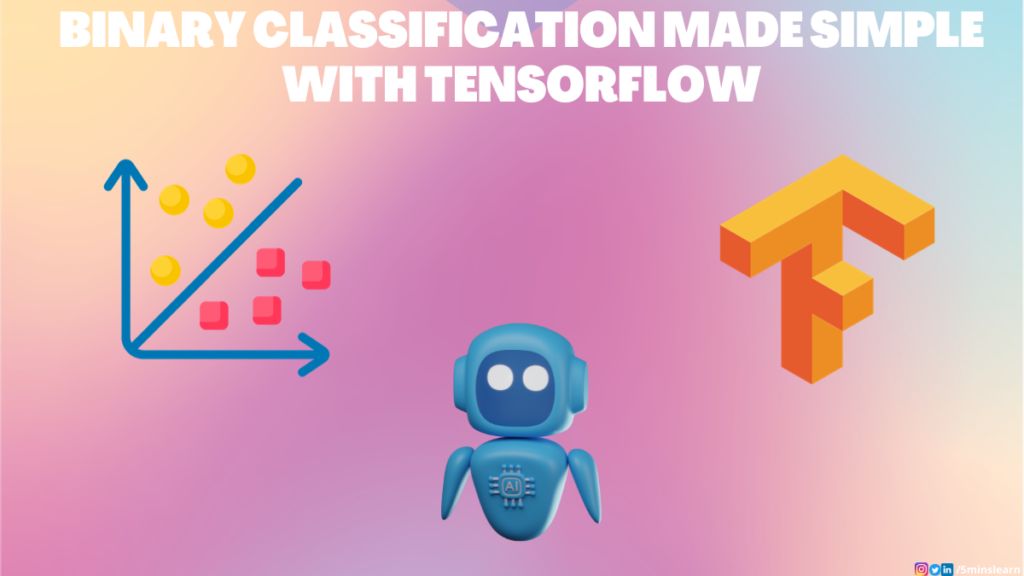This article titled “How to Fine-Tune the Donut Model – With Example Use Case” explores the concept of fine-tuning the Donut Model in the context of coding. It provides a practical guide on how to optimize the performance and accuracy of the model, using a specific use case as an example. By fine-tuning the model, developers can enhance its capabilities and tailor it to specific tasks or datasets. The article offers detailed explanations, step-by-step instructions, and code examples, making it a valuable resource for those looking to improve their coding skills and understand the intricacies of the Donut Model. Whether you’re a beginner or an experienced programmer, this article will provide you with insights and practical techniques to take your coding to the next level.
Understanding the Donut Model
What is the Donut Model?
The Donut Model is a machine learning algorithm that is widely used in various fields, including data science, image classification, and artificial intelligence. It is a flexible and powerful tool that can be fine-tuned to achieve optimal performance in different applications. The Donut Model gets its name from its unique architecture, which resembles the shape of a donut.
Why Fine-Tuning is Important
Fine-tuning the Donut Model is crucial in order to achieve the best possible results in a specific task or problem. While the default parameters of the Donut Model may work well in general scenarios, they might not be optimized for specific applications. Fine-tuning allows for adjusting the model’s parameters to better fit the data and improve its performance. It helps in addressing the model’s weaknesses and enhancing its strengths, making it more accurate and efficient.
Benefits of Fine-Tuning the Donut Model
There are several benefits to fine-tuning the Donut Model. Firstly, it allows for customization according to the specific requirements of the problem at hand. By fine-tuning, the model can be tailored to better understand and interpret the data, resulting in more accurate predictions or classifications. Secondly, fine-tuning can lead to improved performance by optimizing the model’s parameters. This can result in faster training times and better generalization capabilities, ultimately increasing the model’s effectiveness. Lastly, fine-tuning provides the opportunity to explore different strategies and techniques, allowing for continuous improvement and innovation in the field of machine learning.
Preparing the Data
Gathering the Necessary Data
Before fine-tuning the Donut Model, it is important to gather the necessary data for the specific task or problem at hand. The quality and quantity of the data play a crucial role in the performance of the model. The data should be representative of the target domain and include a wide range of examples to ensure the model can learn the underlying patterns accurately. Depending on the application, the data can be obtained from various sources such as databases, APIs, or data scraping tools.
Cleaning and Preprocessing the Data
Once the data has been collected, it is essential to clean and preprocess it to ensure its quality and compatibility with the Donut Model. This involves removing any irrelevant or redundant data points, handling missing values, and transforming the data into a suitable format. The data may also need to be normalized or standardized to eliminate any bias or discrepancies among the different features. Additionally, feature engineering techniques can be applied to enhance the model’s performance by creating new meaningful features or reducing the dimensionality of the data.

Choosing the Right Parameters
Identifying the Parameters to Fine-Tune
To fine-tune the Donut Model, it is necessary to identify the parameters that are most influential in achieving the desired performance. These parameters can include learning rate, batch size, activation functions, regularization techniques, and optimization algorithms, among others. Each parameter has a direct impact on the model’s behavior and can be adjusted to optimize its performance. Understanding the significance of each parameter and its effect on the model is crucial in determining the right values for fine-tuning.
Determining the Range of Values for Each Parameter
Once the parameters to fine-tune have been identified, it is important to determine the range of values for each parameter that will be explored during the fine-tuning process. This can be done through experimentation and analysis of the data. It is essential to consider both the lower and upper bounds of the range to ensure a comprehensive exploration of the parameter space. The range should be wide enough to encompass a diverse set of values while being constrained within a reasonable and computationally feasible range.
Creating the Training and Validation Sets
Splitting the Data into Training and Validation Sets
Before proceeding with the fine-tuning process, it is necessary to split the data into separate training and validation sets. The training set is used to train the Donut Model, while the validation set is used to evaluate the model’s performance and make adjustments during the fine-tuning process. The data should be randomly divided into these two sets to ensure that they are representative of the entire dataset and reduce any biases that may affect the model’s performance.
Ensuring the Sets are Representative of the Entire Data
When splitting the data into training and validation sets, it is important to ensure that both sets are representative of the entire dataset. This means that the distribution and characteristics of the data should be consistent between the two sets. This can be achieved through techniques such as stratified sampling or by using cross-validation approaches. By ensuring the sets are representative, the performance evaluation on the validation set can provide a reliable estimate of how the model will perform on unseen data.

Performing Initial Training
Training the Donut Model with Default Parameters
Before fine-tuning the Donut Model, it is necessary to perform initial training using the default parameters. This allows for establishing a baseline performance and understanding the model’s initial behavior. The training process involves feeding the training data into the Donut Model and iteratively adjusting the model’s parameters to minimize the loss function. The default parameters typically provide a reasonable performance, but they may not be optimal for the specific task or problem.
Evaluating the Model’s Performance
Once the initial training is complete, it is important to evaluate the performance of the Donut Model using the validation set. This involves calculating various metrics such as accuracy, precision, recall, or F1 score, depending on the specific task at hand. The evaluation metrics provide insights into the model’s strengths and weaknesses and help identify areas for improvement. The initial performance evaluation serves as a benchmark for comparing against the fine-tuned models.
Identifying Performance Gaps
Analyzing the Model’s Weaknesses
To identify performance gaps and areas for improvement, it is necessary to analyze the weaknesses of the Donut Model. This can be done by examining the misclassified or mispredicted instances from the validation set. By understanding why and how the model fails to make accurate predictions, adjustments can be made during the fine-tuning process to address these weaknesses. This analysis can involve examining the misclassified instances’ characteristics, exploring potential biases in the data, or identifying patterns that were not captured by the default parameters.
Identifying Areas for Improvement
Based on the analysis of the model’s weaknesses, areas for improvement can be identified and targeted during the fine-tuning process. These areas can include specific features, hyperparameters, or training techniques that can enhance the model’s performance. For example, if the model struggles with handling imbalanced data, techniques such as oversampling or undersampling can be explored. Similarly, if the model exhibits high bias or variance, regularization techniques or different optimization algorithms can be considered. The goal is to iteratively adjust and fine-tune the model to address these areas for improvement.

Choosing the Fine-Tuning Strategy
Grid Search
Grid search is a fine-tuning strategy that systematically explores all possible combinations of parameter values within a predefined range. It involves defining a grid of parameter values to explore and training and evaluating the Donut Model for each combination. Grid search can be computationally expensive but guarantees an exhaustive search of the parameter space.
Random Search
Random search is a fine-tuning strategy that randomly samples parameter values within a predefined range. It does not systematically explore all possible combinations like grid search but avoids the computational cost associated with it. Random search provides a good balance between exploration and exploitation of the parameter space.
Bayesian Optimization
Bayesian optimization is a fine-tuning strategy that uses probabilistic models to model the performance of the Donut Model as a function of the parameters. It iteratively selects parameter values to evaluate based on the expected improvement in the model’s performance. Bayesian optimization is particularly useful when the parameter space is high-dimensional and expensive to evaluate.
Using Predefined Templates
Using predefined templates is a fine-tuning strategy that leverages expert knowledge or prior experience to guide the selection of parameter values. Templates can be created based on commonly observed patterns or best practices in the field. These templates serve as a starting point for fine-tuning and can significantly reduce the search space while ensuring reasonable performance.
Implementing the Fine-Tuning Strategy
Defining the Search Space
Before implementing the fine-tuning strategy, it is necessary to define the search space for the parameters. This involves specifying the ranges or values that will be explored during the fine-tuning process. The search space should be comprehensive yet constrained to ensure a meaningful exploration of the parameter space. The search space defines the boundaries within which the fine-tuning strategy will operate.
Iterating over Parameters and Configurations
Once the search space is defined, the fine-tuning strategy involves iterating over the parameters and configurations to explore. This can be done using a loop or an iterative process. For each iteration, the Donut Model is trained and evaluated using the specified parameter values. The performance on the validation set is then recorded to compare and select the best-performing configuration.
Evaluating the Models
During the fine-tuning process, it is crucial to continuously evaluate the performance of the models. This involves calculating the evaluation metrics on the validation set for each configuration and comparing the results. The best-performing model can be selected based on the evaluation metrics or other predefined criteria. The evaluation process helps in understanding how the model’s performance changes with different parameter values and configurations.

Evaluating the Fine-Tuned Model
Comparing the Performance of the Fine-Tuned Model with the Baseline Model
Once the fine-tuning process is complete, it is important to compare the performance of the fine-tuned model with the baseline model trained using default parameters. This comparison helps in assessing the effectiveness of the fine-tuning strategy and the improvements achieved. The performance metrics, such as accuracy or precision, can be compared between the two models to determine the extent of the improvement.
Analyzing the Improvement in Metrics
Analyzing the improvement in metrics provides insights into the effectiveness of the fine-tuning process. It helps in understanding how different parameter values and configurations impact the performance of the Donut Model. By comparing the performance metrics before and after the fine-tuning process, it is possible to identify the factors that contributed to the improvement and gain a deeper understanding of the model’s behavior.
Example Use Case: Image Classification
Description of the Use Case
To illustrate the fine-tuning of the Donut Model, let’s consider the example use case of image classification. In this use case, the Donut Model is trained to classify images into different categories or classes. The Donut Model can be fine-tuned to improve its accuracy and robustness in image classification tasks.
Fine-Tuning the Donut Model for Image Classification
To fine-tune the Donut Model for image classification, the process discussed earlier can be applied. The data, consisting of labeled images, is gathered and preprocessed. The parameters to be fine-tuned are identified, such as learning rate, batch size, and activation functions. The data is split into training and validation sets, ensuring their representativeness.
The initial training of the Donut Model is performed using default parameters, and its performance is evaluated on the validation set. Performance gaps and weaknesses are identified and targeted for improvement. The fine-tuning strategy, such as grid search or random search, is chosen to explore the parameter space. The search space is defined, and the parameters and configurations are iterated, evaluating the models and comparing their performance.
The fine-tuned model is evaluated by comparing its performance with the baseline model. The improvement in metrics, such as accuracy or precision, is analyzed to understand the impact of the fine-tuning process. Through this example use case, the effectiveness of fine-tuning the Donut Model for image classification can be demonstrated.
In conclusion, the Donut Model is a versatile machine learning algorithm that can be fine-tuned for optimal performance in various applications. By understanding the importance of fine-tuning, preparing the data, choosing the right parameters, and implementing a fine-tuning strategy, the performance of the Donut Model can be significantly improved. The example use case of image classification further illustrates the practical application of fine-tuning the Donut Model.

